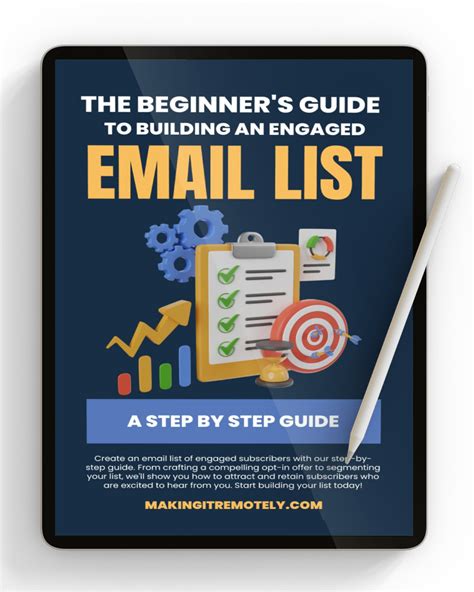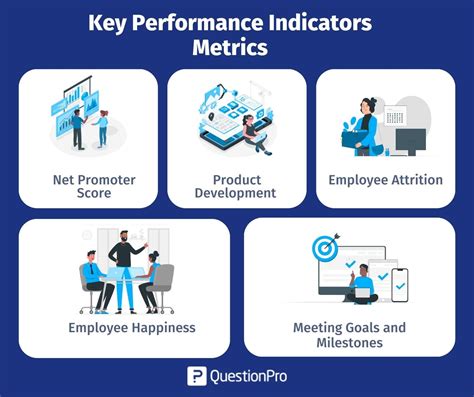In today's digital age, adapting your marketing strategies is key to staying ahead in the competitive business landscape. One powerful tool that has consistently proven its worth is email marketing. With its ability to connect directly with your target audience and deliver personalized messages, email marketing has become an indispensable part of any successful business strategy. However, in order to truly maximize the effectiveness of your email campaigns, it is essential to employ certain tactics that will set you apart from your competitors.
Avoiding common pitfalls and implementing best practices can significantly enhance the impact of your email advertising efforts. Crafting compelling subject lines, for instance, can capture the attention of your recipients and entice them to open your emails. By using strong and impactful words, combined with a touch of creativity, you can create subject lines that stand out in crowded inboxes and increase your open rates.
Another crucial aspect of successful email marketing is creating engaging and visually appealing content. Incorporating relevant images, vibrant colors, and a balanced mix of text and visuals can make your emails more visually appealing and enticing to read. Remember to keep your content concise, but informative, and use elements such as bullet points and subheadings to make it easier for your audience to scan the email and quickly grasp the main points you are trying to convey.
The power of personalization should not be underestimated when it comes to email marketing. Addressing your recipients by their first names and tailoring the content to their specific needs and interests can help establish a sense of connection and make them feel valued. Furthermore, segmenting your email list and sending targeted campaigns to different groups of subscribers can greatly increase the relevance and effectiveness of your messages.
By implementing these important strategies, you can elevate your email marketing game and ensure that your messages have a greater impact on your target audience. With the right tactics in place, you can build stronger relationships with your subscribers, boost your open and click-through rates, and ultimately achieve higher conversion rates and business success.
Building a Powerful Email List of Engaged Subscribers

Creating a solid foundation for your email marketing endeavors involves the strategic development of an engaged subscriber list. By employing effective techniques and strategies, you can attract a diverse range of individuals who are genuinely interested in your brand or business. In this section, we will explore the best practices for building a strong email list that cultivates active engagement and maximizes the potential of your email marketing campaigns.
| Key Strategies |
|---|
| 1. Optimize your website for sign-ups |
| 2. Offer valuable incentives |
| 3. Leverage social media presence |
| 4. Utilize lead magnets |
| 5. Engage through interactive content |
One primary strategy for building a robust email list is to optimize your website for sign-ups. By strategically placing sign-up forms and ensuring they are easily visible, you can encourage visitors to subscribe to your email updates. Offering valuable incentives, such as exclusive discounts or free resources, can further incentivize sign-ups and attract individuals who genuinely want to engage with your brand.
Additionally, leveraging your social media presence can significantly contribute to building an engaged subscriber list. By promoting your email subscription through social platforms and engaging with your audience, you can attract followers who are already interested in your content, ensuring a higher rate of engagement.
Incorporating lead magnets, such as ebooks, webinars, or downloadable guides, can be highly effective in enticing users to subscribe to your email list. Creating high-quality and valuable content that solves a problem or addresses a need will increase the likelihood of individuals wanting to stay connected with your brand through email.
Furthermore, incorporating interactive content, such as surveys, quizzes, or contests, can enhance engagement with your email list. By providing interactive experiences, you can not only capture valuable data but also foster a sense of involvement and loyalty among your subscribers.
Building a strong email list of engaged subscribers requires a thoughtful approach. By implementing these strategies and continually refining your approach, you can cultivate a loyal base of subscribers who eagerly anticipate your emails and actively engage with your brand.
Crafting Irresistible Subject Lines that Demand Attention
When it comes to email marketing, the subject line is like a key that can unlock the potential of your campaigns. It is the first thing that recipients see in their inbox, and it determines whether they will open your email or simply ignore it. Therefore, crafting compelling subject lines is crucial to grab attention and encourage engagement. In this section, we will share effective strategies to create subject lines that captivate your audience and drive them to take action.
1. Spark Curiosity One way to pique the interest of your audience is by using subject lines that create a sense of curiosity. By leaving out crucial information or posing intriguing questions, you can entice recipients to open your email to find out more. For example, "Discover the secret to increasing your sales by 200%." |
2. Personalize and Segment People tend to respond better to emails that speak directly to them. By personalizing subject lines with recipient names or segmenting your email list based on demographics or past behavior, you can make your emails more relevant and increase open rates. For instance, "John, exclusive offer just for you!" |
3. Create a Sense of Urgency By conveying a sense of urgency in your subject lines, you can trigger a fear of missing out (FOMO) in your recipients. Limited-time offers or deadlines can create a sense of urgency and motivate immediate action. For example, "Last chance: 50% off ends tonight!" |
4. Use Power Words The choice of words in your subject lines can significantly impact their effectiveness. Power words, such as "free," "exclusive," "limited," or "instant," evoke emotions and grab attention. Be mindful of the language you use and how it aligns with your target audience. For instance, "Get your free gift now!" |
5. Keep it Short and Sweet With the increasing number of emails people receive daily, brevity is key. Opt for concise subject lines that convey the main message effectively. Avoid lengthy phrases that may get cut off or fail to catch attention. For example, "Unleash your creativity with our new collection." |
By implementing these strategies, you can craft subject lines that not only grab attention but also entice recipients to open your emails and take the desired action. Experiment, analyze the results, and continuously optimize your subject lines to maximize the success of your email marketing campaigns.
Personalizing emails to enhance audience engagement

When it comes to crafting impactful email communication, tailoring your messages to meet the unique needs and preferences of your recipients can greatly increase audience engagement. Personalization is a key strategy in email marketing that allows you to connect with your subscribers on a more individual level, making them feel valued and increasing the likelihood of converting them into loyal customers.
Segment your audience: One effective way to personalize your emails is by segmenting your audience based on various criteria such as demographics, purchase history, and engagement level. By dividing your subscribers into different groups, you can deliver targeted content and offers that are relevant to their specific interests and needs. |
Use dynamic content: Dynamic content allows you to automatically customize the content of your emails based on individual subscriber data. By leveraging data such as their name, location, or previous interactions with your brand, you can create highly personalized and relevant messages that resonate with each recipient, leading to a higher engagement rate. |
Create personalized subject lines: Your email subject lines play a crucial role in grabbing the attention of your subscribers. By incorporating personalization elements such as their name or a mention of their recent activity, you can make your emails stand out in crowded inboxes and entice recipients to open and engage with your message. |
Send triggered and behavior-based emails: Triggered emails are automated messages that are sent based on a specific action or event, such as a user signing up for your newsletter or abandoning a cart. By leveraging this technique, you can deliver timely and highly relevant content that addresses the specific needs or preferences of each individual, fostering a deeper connection and increasing engagement. |
Personalize your call-to-action: The call-to-action (CTA) is a crucial element of your email that drives recipients to take a desired action. By tailoring the CTA to align with the individual recipient's interests and preferences, you can optimize its effectiveness. This can be done by offering personalized recommendations, exclusive deals, or other incentives that are tailored to each recipient's unique profile. |
In conclusion, personalizing your emails is a powerful strategy that can significantly enhance the effectiveness of your email marketing campaigns. By segmenting your audience, utilizing dynamic content, personalizing subject lines, sending triggered emails, and tailoring your CTAs, you can create a personalized experience for each recipient, leading to increased engagement and better overall results.
Optimizing Email Content and Layout through A/B Testing: Unlocking the Power of Data-Driven Decision Making
In today's highly competitive digital landscape, it is crucial for businesses to continuously improve their email marketing strategies. A/B testing offers an effective method to optimize the content and layout of your emails, ultimately enhancing their performance and increasing engagement with your audience. This section explores how A/B testing can provide valuable insights into your email marketing campaigns, allowing you to make data-driven decisions that result in better outcomes.
Understanding A/B Testing:
At its core, A/B testing involves creating two or more versions of an email and sending them to different segments of your target audience. By comparing the results of each variation, you can identify which elements resonate most with your subscribers and drive the desired actions. This systematic approach enables you to refine your email content and layout based on real-time data, rather than relying on assumptions or subjective opinions.
Identifying Variables to Test:
In order to conduct effective A/B tests, it is essential to identify the variables that have the potential to impact the performance of your emails. These variables can include subject lines, preheaders, email copy, call-to-action buttons, images, color schemes, and overall layout. By isolating and testing one variable at a time, you can accurately measure its impact on key metrics such as open rates, click-through rates, and conversions.
Creating Testing Hypotheses:
Before diving into A/B testing, it is important to formulate clear hypotheses that outline the expected outcomes of each variation. These hypotheses serve as the foundation for your tests and help you set specific goals to measure success. For example, you might hypothesize that a personalized subject line will result in higher open rates compared to a generic one. By setting measurable objectives, you can accurately evaluate the effectiveness of different content and layout elements.
Implementing A/B Tests:
To conduct A/B tests, you will need a robust email marketing platform that allows you to segment your audience and monitor performance metrics. Divide your subscriber list into random, representative groups and assign each group to receive one variation of your email. Ensure that your tests are conducted simultaneously, with the only difference being the variable you are testing. By keeping all other elements consistent, you can confidently attribute any differences in performance to the specific variable being tested.
Interpreting and Applying Results:
Once your A/B test has concluded, carefully analyze the results and draw meaningful insights from the data. Compare the performance metrics of each variation and identify patterns or trends that emerge. Use these findings to optimize your email content and layout, focusing on the elements that have proven to be more effective in engaging your audience. By iteratively refining your emails based on data-driven decisions, you can continuously improve the impact and effectiveness of your email marketing campaigns.
Conclusion:
A/B testing provides a valuable opportunity to leverage data-driven decision making in your email marketing strategies. By testing and optimizing various elements of your email content and layout, you can enhance engagement, increase conversions, and ultimately achieve better outcomes. Incorporating A/B testing as a regular practice empowers you to make informed decisions based on real-time data and stay ahead in the competitive world of email marketing.
Analyzing email metrics to measure success and make improvements

Understanding the performance of your email campaigns is crucial for achieving success and enhancing your email marketing efforts. By analyzing various email metrics, you can gain valuable insights into the effectiveness of your campaigns, identify areas for improvement, and make data-driven decisions to optimize your email marketing strategy.
- Open Rate: The open rate indicates the percentage of recipients who opened your email. A high open rate suggests that your subject lines and preheader texts are engaging, while a low open rate may indicate the need for improvements in these areas. Experimenting with different subject lines and personalization techniques can help boost your open rates.
- Click-Through Rate (CTR): The CTR measures the percentage of recipients who clicked on a link within your email. A higher CTR signifies that your content and call-to-action are compelling. To improve CTR, consider optimizing your email layout, using clear and actionable CTAs, and creating relevant and valuable content that resonates with your audience.
- Conversion Rate: The conversion rate measures the percentage of recipients who completed a desired action after clicking on a link in your email. It could be making a purchase, filling out a form, or subscribing to a newsletter. Analyzing conversion rates can help you assess the effectiveness of your email in driving desired actions. To increase conversion rates, ensure that your landing pages are optimized, your offers are enticing, and your email copy aligns with the expectations set in the email.
- Bounce Rate: The bounce rate represents the percentage of emails that were not delivered to the recipient's inbox. Bounces can be classified as either a hard bounce (permanent delivery failure) or a soft bounce (temporary issue). Monitoring bounce rates can help you maintain a clean and updated email list, improve deliverability, and reduce the chances of being flagged as spam.
- Unsubscribe Rate: The unsubscribe rate indicates the percentage of recipients who opted out of receiving future emails from your brand. A high unsubscribe rate may indicate issues with your email content, frequency, or targeting. To minimize unsubscribes, ensure that your emails provide value, segment your audience to deliver more personalized content, and give recipients control over their subscription preferences.
By regularly monitoring and analyzing these email metrics, you can gain actionable insights that drive the success of your email marketing campaigns. Remember, data is a powerful tool, and leveraging it effectively can help you make informed decisions, optimize your strategies, and achieve your marketing goals.
FAQ
What are some effective email marketing strategies?
Some effective email marketing strategies include personalizing emails, segmenting your audience, creating compelling subject lines, providing valuable content, and using email automation.
How can personalization improve email marketing?
Personalization in email marketing can improve engagement and response rates. By addressing recipients by their name and tailoring content based on their preferences or past behavior, you can make your emails more relevant and increase the chances of conversions.
Why is segmenting the audience important in email marketing?
Segmenting the audience allows you to send targeted emails to specific groups of people who are more likely to be interested in your offering. This increases the effectiveness of your campaigns, as you can deliver more relevant content and promotions to each segment.
What are some tips for creating compelling subject lines?
To create compelling subject lines, it's important to keep them concise, clear, and intriguing. Including personalization, urgency, or curiosity can also increase open rates. Testing different subject lines and analyzing the results can help you find the most effective approach for your audience.



